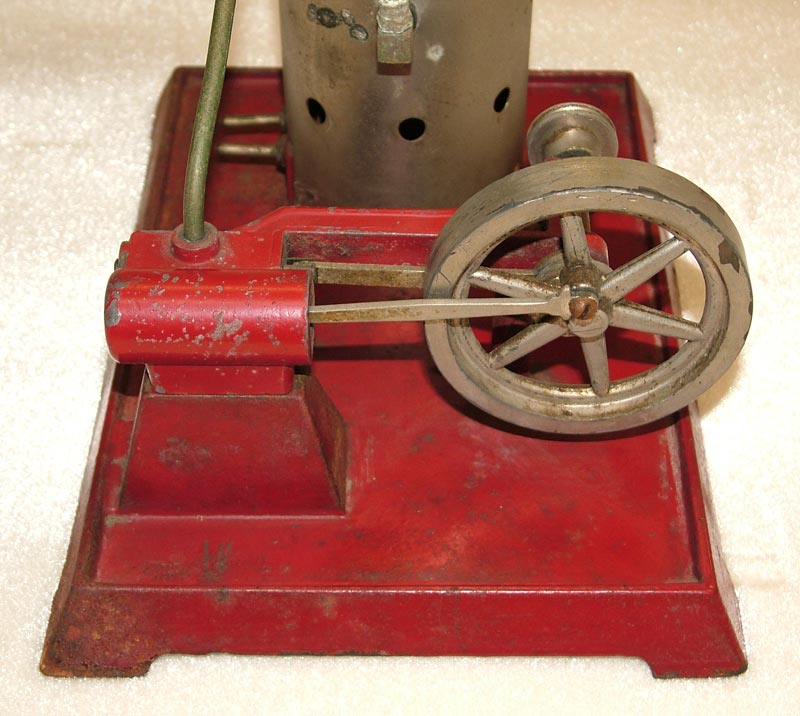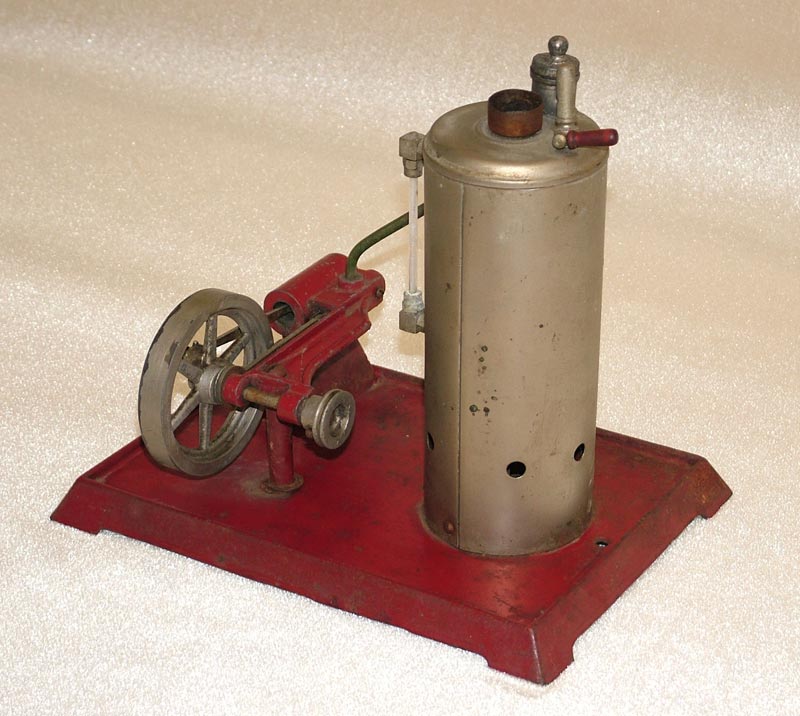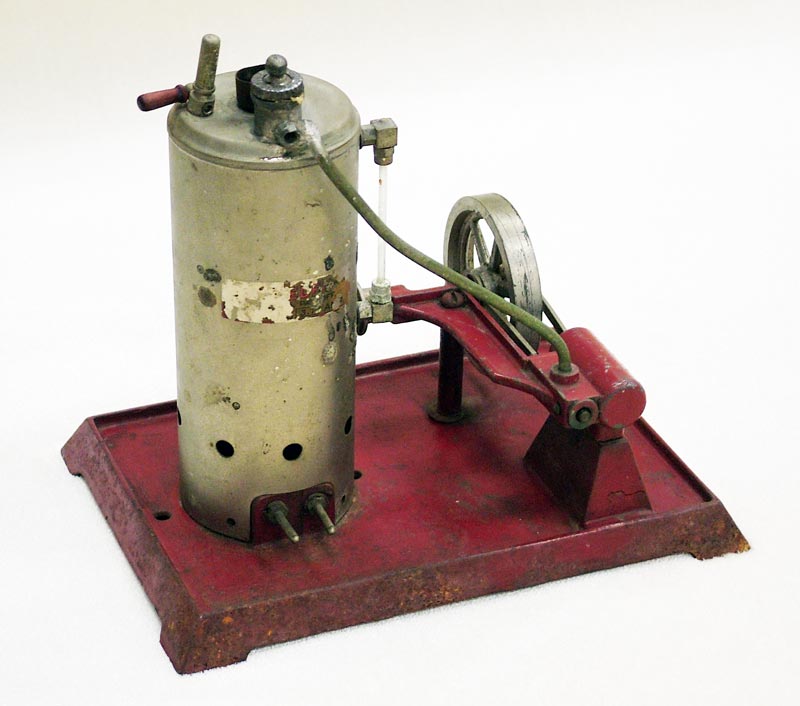This Weeden engine was given to Judith Haxo’s husband, Francis T. Haxo, when he was a child in the 1930s. Born in 1921 in North Dakota, his family moved to California in 1930. Coming from a very thrifty family, the steam engine was probably a gift from his uncle Victor Jallu. The engine came with the family to San Diego in 1954, where Francis went on to become biologist at Scripps Institute of Oceanography until his retirement in 1988. As a grad student at Stanford in the 1940s, he co-developed an oxygen-electrode to measure the oxygen output of algae which led to a better understanding of photosynthesis in algae and the role of chromatic transients.
About the Weeden Mfg. Co.—Watchmaker William Nye Weeden started the company in 1883 to compete with European manufacturers like Bing, Marklin, Doll and others as well as companies like Mamod and Bowman & Burnac in the UK. He got started when offered a contract to design a quality toy that The Youth’s Companion magazine could use as a promotional give-away to boost subscriptions. The design was so clever and successful that he received an initial order of 10,000 units at one dollar each. He used the money to start the Weeden Manufacturing Company, which went on to offer a large line of engines and other toys for many years. Mr. Weeden made his own dies and molds, and, realizing their value, locked them away in a fireproof save each night. After almost 60 years, the company was eventually sold in 1942 to National Playthings, which halted production of the steam engine line.
The boiler of this engine is heated by electricity rather than the usual alcohol flame, making it a marginally safer toy at the time. The other toy steam plants on display are all heated by means of a flame.



